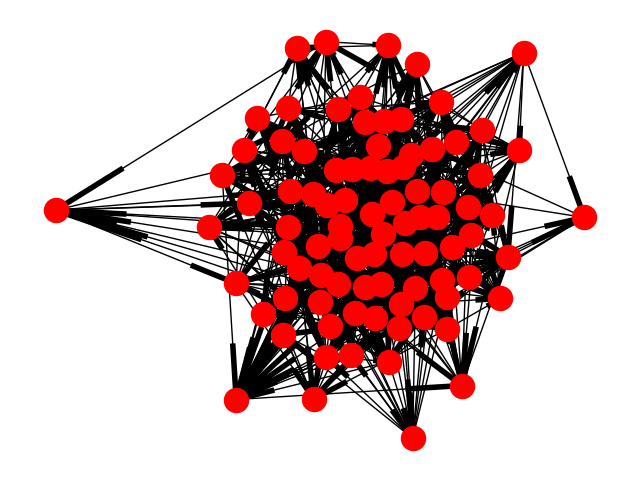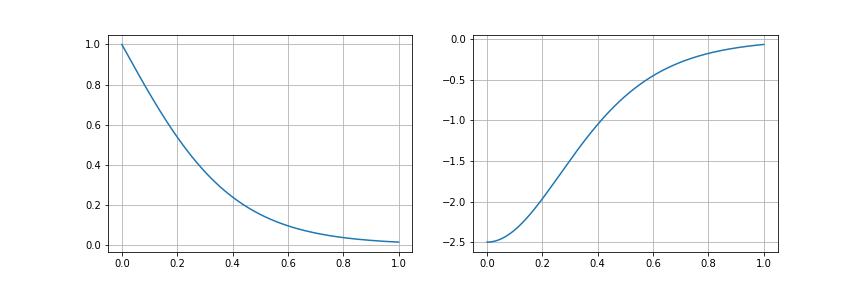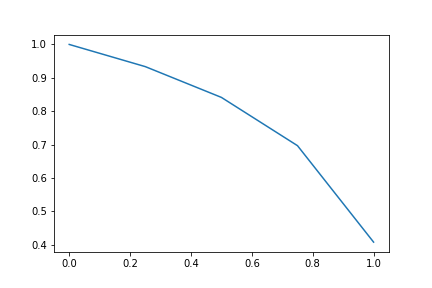This project acts as a way to tinker with the Stream API and add some machine learning capabilities with hopefully little overhead.
The first thing we need to do is to create a social network with impression/interaction history in order to have some data to train on. We could do this one of two primary ways:
- Just simulate events and pull from a random list of users, with the assumption that all users can react to every other user. The advantage of this approach is that it creates a mega-network with a ton of user interaction.
- Simulate a social network from the ground up. This means starting by generating a finite list of users, giving each of them a couple friends, and then simulating events based on who they know. The advantage of this solution is two-fold, the first (and primary) being that it's a little more realistic. The second is that it creates a bunch of tiny social networks that interact with each other. Currently we're using the second approach, since we wanted a more adaptive and flexible solution.
Initially this was written with sqlite and ponyorm, but it was decided that Mongo might be a better solution to more directly model the Stream API. This database consists of two main documents that keep track of our entire (tiny) network.
This document tracks user info which in our case is merely their name and a list of friends. In a production scenario this could be easily extended. The schema is as follows:
{
'name': <username>
'friends': [
<list of friend document object ids>
]
}
When we generate data this results in a quite dense social network.
This tracks user events, which are closely modelled off of the Stream API Documentation. The schema is as follows:
{
'actor': <user document object id>
'verb': <'post'|'interact'>,
'object': <object id if there is one>
'time': <time of post>
'message': <whatever the post contents are>,
'topic': <topic of event (in this case post)>,
'to': <user document object id, only in interact events>
}
This then gets sent right to the Stream API
Stream's API is very easy to use. We're pulling all this code from Stream's Website.
# Select user to tinker with?
chris = client.feed('user', 'chris')
# Add activity to their feed
chris.add_activity({
'actor': 'chris',
'verb': 'add',
'object': 'picture:10',
'foreign_id': 'picture:10',
'message': 'This bird is absolutely beautiful. Glad it\'s recovering from a damaged wing.'
})We start by just sending user follows to Stream, and then each of the events we post.
We can generate a flat post feed by (provided a random user) filtering based on their friends (which translates in this situation to who they follow) and sorting chronologically.
Stream's default feed is this flat feed. It's tricky to make this code easy to re-run and get the same results because even though we can delete the MongoDB Database, it's trickier to do the same for Stream. In the ideal world our flat feed should match the Stream feed perfectly, but in reality since we don't delete data from Stream it doesn't.
Now, if we want to add personalization we can use the interact type events instead of post
events.
For simplicity we assume that we can track and determine the "topic" of each post, and do a user-by-user weighting based on these topics. This isn't exactly traditional machine learning but instead an adaptive weighting algorithm. That being said, doing a "state of the art ML solution" would be overkill here. After all, "Perfect is the Enemy of Good". I also realize that I'm kinda glossing over a huge step here of how something like the post topic can be determined, but that's a somewhat unrelated problem so I'm skipping past it.
Let's jump into how this thing works.
The first thing to realize is that we want any weighting system to decay over time, and when a user interacts with a post will dictate how the weighting algorithm performs. We don't want to force a user to look at the same sort of things always once the weights are settled, as individual's interests adjust over time, and the easiest way to get bored of a platform is via repetition.
So what are the weights? In short they are small modifiers that are used to adjust the feed order. In practice this means that every topic has an initial weight of 0 (its minimum) with maximum of 1. As the user has more interactions with that topic, the more the weight jumps towards 1. This works via the simple equation:
def score_bump(score: float) -> float:
return score + ((1 - score) / 2)In other words, jump the score to the midpoint between its current value and 1. For example,
0 -> 0.5 -> 0.75 -> ... -> 1
In order to decay now we need to determine an easy way for it to drop back down to 0 after time passes. To do this we use a Logistic Equation's first derivative and treat the entire thing like a poor differential equation solver, more specifically like single-step Runge-Kutta.
In other words, at each value of the score, we look at the slope of the logistic curve at that point and jump forwards by the (normalized) amount of time elapsed since the last interaction we had. This causes the score to decrease slowly initially, and then speed up the longer since interaction.
def decay_func(x):
return 2 / (1 + np.exp(5 * rate_parameter * x))
def decay_func_p(x):
return (-2 * (5 * rate_parameter) * np.exp(5 * rate_parameter * x)) / ((np.exp(5 * rate_parameter * x) + 1) ** 2)For a visual on this, see this pic.
This is perfect for us, since the longer it's been since a user interacts with a topic the less likely it is that we want to filter on it.
Once we train our weights we just add them to the initial weights based off of the normalized datetime of the post and resort based on these weights.
Working with Stream is super straightforward, most of the effort in this project was used to setup a flexible framework around which I could use Stream and neat ML stuff.
My personalized feed isn't perfect by a long shot, it overweights too much, but it's a good start.
If you have questions look on www.will-farmer.com for my email or make a public issue here.


